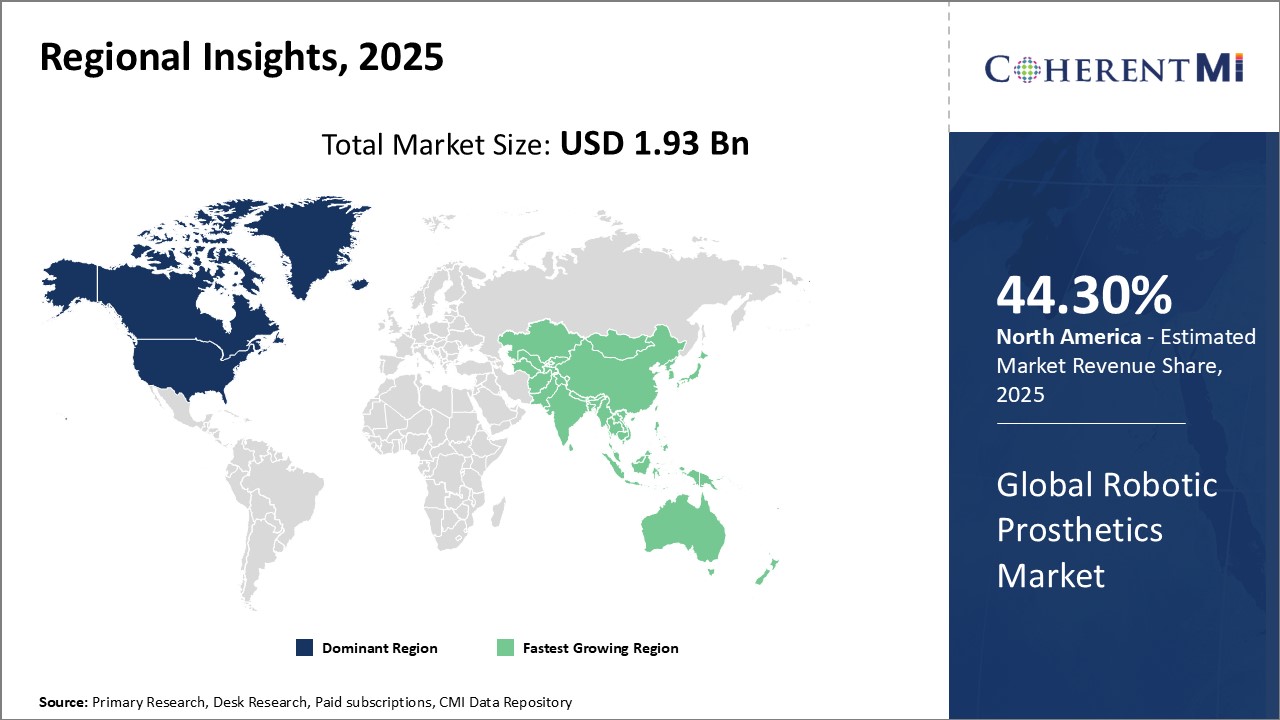Global Robotic Prosthetics Market SIZE AND SHARE ANALYSIS - GROWTH TRENDS AND FORECASTS (2023 - 2030)
Global Robotic Prosthetics Market is Segmented By Product Type (Prosthetic Legs/Knees ,Prosthetic Arms, Prosthetic Feet/Ankles, , Prosthetic Hands, an....
Global Robotic Prosthetics Market Trends
- Development of more lightweight and compliant prosthetic limbs: A major trend is the engineering of prosthetic components using new lightweight alloys, 3D printed lattice structures, carbon fiber, and compliant materials to enhance prosthesis flexibility, durability, and agility while reducing weight. Lighter prostheses require less energy expenditure for limb movement, thus enabling easier mobility over long term use and improving user comfort. Compliant prosthetic joints better absorb shocks from walking impact. More widespread adoption of lightweight, complaint structural designs matched to patient anatomy will be a key trend. For instance, in August 2021, the Massachusetts Institute of Technology developed a neuroprosthetic hand that is lightweight, soft, and inexpensive. The researchers discovered that the prosthesis, which was developed with a tactile feedback system, restored some rudimentary sensation in a volunteer's residual leg. The smart hand weighs approximately half a pound and is supple and stretchy.
- Advancements in neural control systems for improved motion control: Sophisticated neural interfaces that seamlessly translate nerve impulses into prosthetic movements represent an important ongoing R&D focus in the market. Control systems based on pattern recognition, targeted muscle reinnervation, and implantable neural links aim to achieve more intuitive and finer motor control for dexterous arm and hand prostheses. Machine learning integration further enhances responsiveness to muscle signals. Neural control is a pivotal trend pushing dexterity of prosthetics closer to natural limb capability.
- Development of sensory feedback systems: Enabling touch sensation and proprioceptive feedback in prosthetics through sensors and electrodes interfaced with peripheral nerves and the brain is an emerging trend. Sensory inputs allow adjustability of grip strength, maintain balance, and avoid inadvertent damage. Developments include bioelectric skin, haptic pressure sensors, and cuff electrodes providing sensory stimulation. Sensory feedback along with advanced motor control will be crucial in improving utility and use of robotic prostheses.
- Adoption of 3D printing to enable low-cost customization: 3D printing of prosthetics using digital patient scans facilitates low-cost mass customization of components, while eliminating lengthy fitting procedures. On-demand printing of sockets, joints, hands, and others matched to limb shape and size ensures comfort and performance. Easy adjustability enables optimizing prosthesis weight distribution. 3D printing also aids rapid prototyping of new designs. The trend of leveraging 3D printing for economical, personalized prosthetics manufacturing will accelerate.
Global Robotic Prosthetics Market Regional Insights:
- North America is expected to be the largest market for global robotic prosthetics market during the forecast period, accounting for over 44.3% of the market share in 2023. The growth of the market in North America is due to high healthcare expenditure, favorable reimbursement policies, and early adoption of advanced technologies. For instance, in December 2021, Centers for Medicare & Medicaid Services released a guideline, outlining the changes related to The Durable Medical Equipment, Prosthetics, Orthotics, and Supplies (DMEPOS) fee schedule that amounts to ensure access to items and services in rural areas; procedures for making benefit category and payment determinations for new items and services that are Durable medical equipment (DME), prosthetic devices, orthotics and prosthetics, therapeutic shoes and inserts, surgical dressings, or splints, casts, and other devices used for reductions of fractures and dislocations under Medicare Part B.
- The Europe market is expected to be the second-largest market for global robotic prosthetics market, accounting for over 30.2% of the market share in 2023. The growth of the market in Europe due to increasing cases of limb loss and presence of key market players in the region.
- The Asia Pacific market is expected to be the fastest-growing market for global robotic prosthetics market, with a CAGR of over 9.9% during the forecast period. The growth of the market in Asia Pacific is due to rising healthcare expenditure and increasing awareness about advanced prosthetics.
Figure 1. Global Robotic Prosthetics Market Share (%), by Region, 2023
